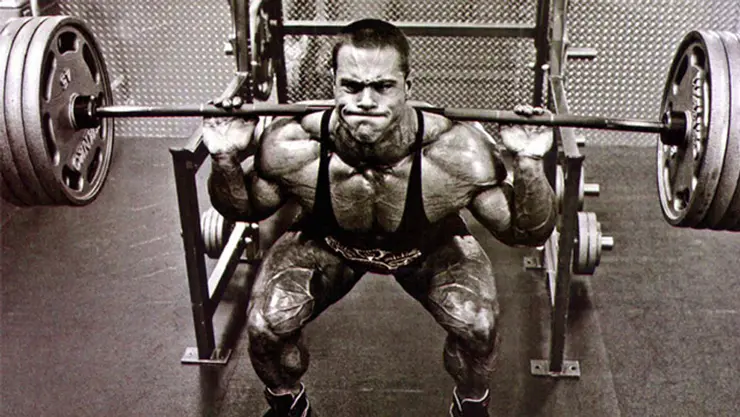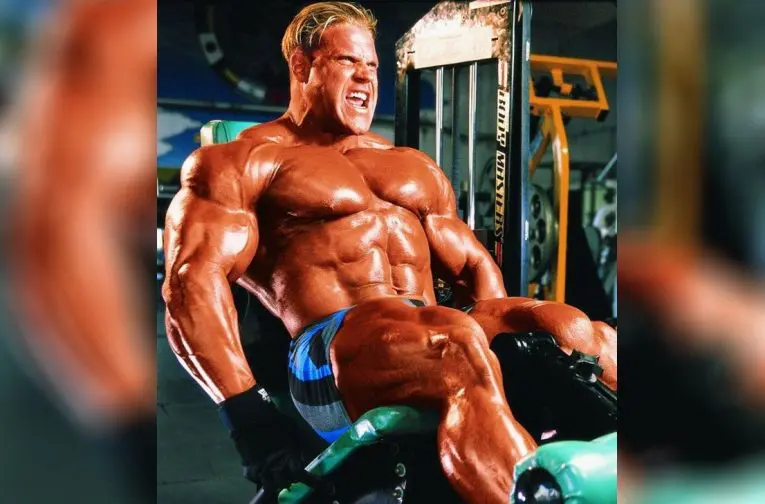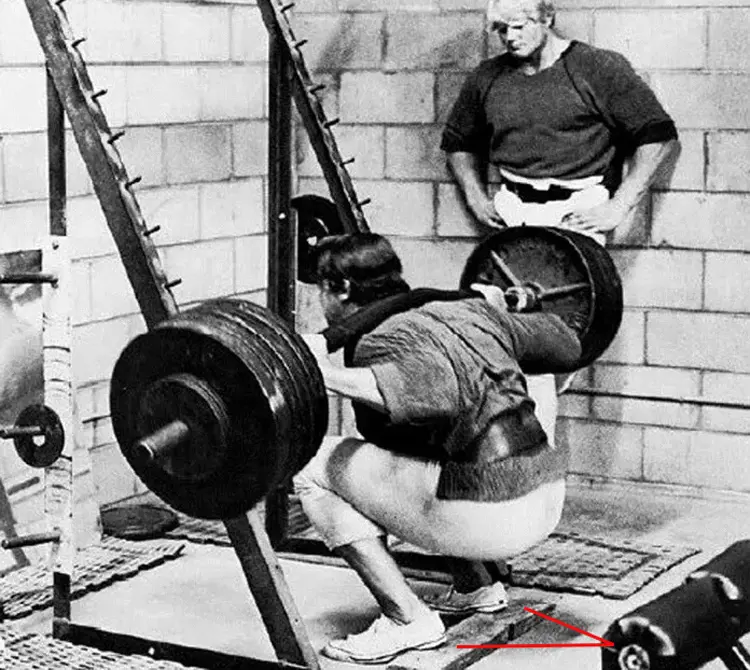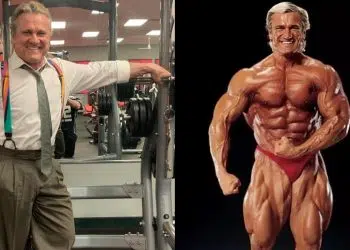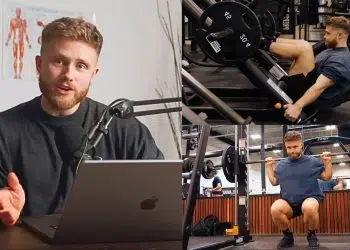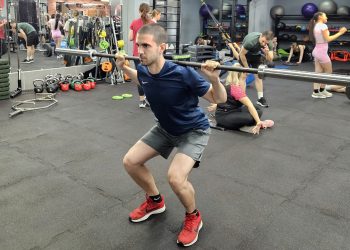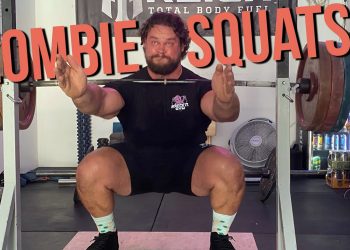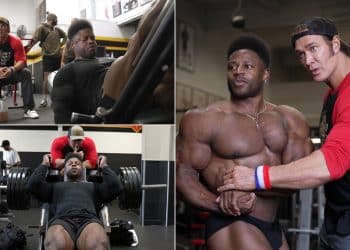Muscle names often sound like a foreign language. That’s actually not all that surprising when you discover that most have their roots in Greek and Latin. Take the biceps brachii, for example, the proper name for the biceps. Its name means two-headed arm muscle, which describes both its location and anatomical structure. The name triceps brachii works the same way, but tri means three.
So, unsurprisingly, the quadriceps, or quads for short, are made up of four muscles. Located on the front of your upper leg, these muscles include:
- Rectus femoris
- Vastus lateralis
- Vastus intermedius
- Vastus medialis
While all four muscle bellies of the quads work together to extend your knee, the rectus femoris, because it crosses your hip, is also a hip flexor. But, of all the quad muscles, the one that we’re most interested in today is vastus medialis, the so-called teardrop muscle.
Vastus Medialis 101
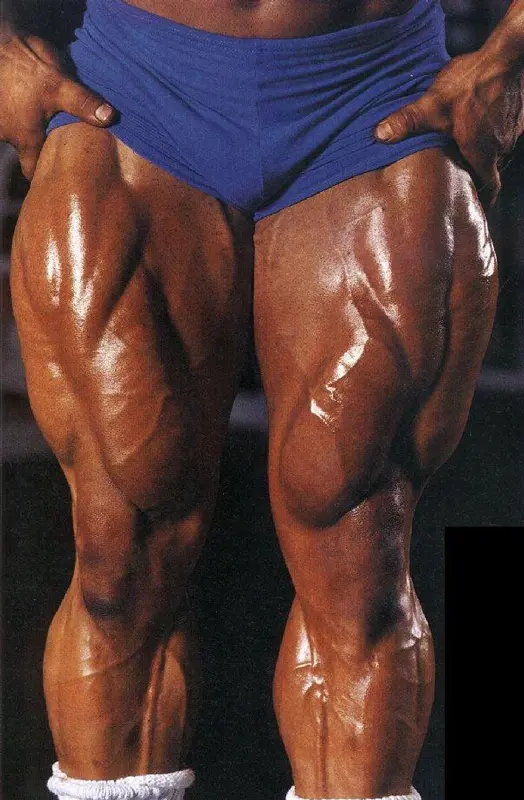
Your vastus medialis is your lowermost, innermost quadriceps muscle. When well-developed, and if you have low body fat levels to increase definition, it looks like a muscular teardrop. The vastus medialis is often called vastus medialis oblique because of the angle at which the muscle fibers are arranged. This gives us the abbreviation VMO.
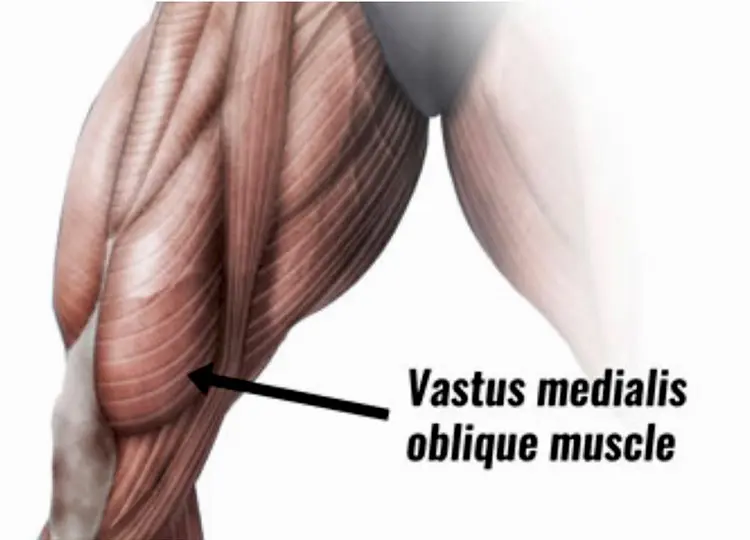
Like all the quadriceps, VMO is a knee extender. In other words, it straightens your knee. But, unlike rectus femoris, it does not cross the hip joint. This makes it a uniarticular muscle, meaning it controls the movement of a single joint. Muscles that control two joints are biarticular, such as the rectus femoris mentioned before.
As well as being a knee extender, VMO is a knee stabilizer and helps make sure your patella or kneecap is correctly aligned. A weak VMO is a common source of knee pain.
Level Up Your Fitness: Join our 💪 strong community in Fitness Volt Newsletter. Get daily inspiration, expert-backed workouts, nutrition tips, the latest in strength sports, and the support you need to reach your goals. Subscribe for free!
The four quadriceps muscles have separate origin points but come together at a single insertion point: the quadriceps tendon. The quadriceps tendon becomes the patellar tendon once it passes over the patella or kneecap bone. Because of this, it’s impossible to isolate any one of the quad muscles.
However, because VMO is most active during terminal (the last part of) knee extension, it is possible to emphasize it with specific exercises and variations.
If you want to add some mass to your teardrop quad muscle or protect your knees from aches and pains, the exercises in the following section can help. Of course, if you currently have knee pain, your first stop should be your doctor!
The Best Teardrop Quad Muscle Exercises
1. 1 ¼ Rep Squats
Almost all exercisers know that squats are one of the best leg builders around. They work all of your lower body muscles, with a big emphasis on the quads. If you want wheels you can be proud of, you NEED to squat hard, heavy, and often!
But squats aren’t great for hitting your VMO. That’s because, as you stand up and approach the top of each rep, the leverage changes, taking tension off your muscles. This variation increases the amount of work your muscles need to do at the end of each rep, forcing VMO to do more.
How to do it:
- Choose your preferred squatting exercise. Back squats, front squats, Smith machine squats, goblet squats, and even bodyweight-only squats can all work.
- Stand with your feet about shoulder-width apart, toes turned slightly out, and core braced.
- Bend your knees and squat down until your thighs are parallel to the floor. Do not round your lower back. Go a little deeper if your flexibility allows.
- Stand back up again.
- Re-bend your knees but, this time, only descend a quarter of the way. Stand back up again.
- That’s one rep – keep going.
- You can use this method for leg presses and Bulgarian split squats
2. Paused Leg Extensions
Leg extensions are an isolation exercise for your quads. Unlike squats, lunges, and leg presses, they do not involve any hip joint movement. This means you can work your quads alone and without your hamstrings and glutes getting in on the action.
Regular leg extensions are an excellent quad exercise, but many lifters spare their VMOs by using too much weight and momentum. This variation forces your teardrop quad to work harder, although it also makes what is already a thigh-burning exercise even tougher.
How to do it:
- Set up the leg extension machine so that your knees are aligned with the machine’s lever arm pivot point. Adjust the leg pad so that it’s just above your ankles. Select a light to moderate weight.
- Smoothly extend your legs until your knees are fully straight. Hold this terminal position for a slow count of three.
- Bend your legs and lower the weights, but do not allow them to touch down.
- Without kicking, extend your legs again. And yes, that wicked pump in your quads is completely normal!
3. Floor Knee Extensions
Do you want to work your VMO without going to the gym? This is the exercise for you. All you need is a rolled-up towel and a mat to sit on. Floor knee extensions are often prescribed by physiotherapists to increase VMO strength and treat knee pain. As an added benefit, this exercise is very easy on your joints.
Level Up Your Fitness: Join our 💪 strong community in Fitness Volt Newsletter. Get daily inspiration, expert-backed workouts, nutrition tips, the latest in strength sports, and the support you need to reach your goals. Subscribe for free!
How to do it:
- Sit on the floor with your back upright, hands by your hips for support. Bend one leg and place your foot on the floor.
- Extend the other leg out in front of you, with your toe pulled up toward your shin. This action increases quadriceps activation.
- Place the rolled-up towel under your extended knee.
- Straighten your knee and lift your foot off the floor. Keep pulling your toes up.
- Lower your foot back to the floor and, without relaxing, do another rep.
- Make this exercise harder by wearing ankle weights.
- You can also use a thicker towel to increase the range of motion. The bigger the roll, the higher your knee will be from the floor, and the more bent your knee will be at the start of each rep.
4. Squats With Bands
Powerlifters do squats with bands to increase the overload as they near the end of each rep. This helps develop the strength necessary to blast through sticking points, leading to a bigger overall lift. We can use the same method to overload VMO. With bands, instead of the tension decreasing at the end of each rep, it actually increases, forcing VMO to work a whole lot harder than usual.
How to do it:
- Place your barbell in a squat rack. Load it with about 50% of the amount of weight you usually use. Attach a strong resistance band to each end of the bar, and then secure the other end to the floor. Use pins at the bottom of your squat rack or heavy dumbbells.
- Duck under the bar and rest it across your upper back, and not your neck. Hold the bar with an overhand grip. Brace your abs and lift the bar out of the rack. Take 1-2 steps back and then adopt your usual squat stance.
- Without rounding your lumbar spine, push your hips back, bend your knees, and squat down until your thighs are roughly parallel to the floor.
- Stand back up, making sure you fully extend your legs at the top of each rep.
- You can also use chains to increase the load at the end of each rep. However, bands are lighter, cheaper, and more portable.
5. The VMO Tapdance
This is another exercise you can do at home. It’s not just a good VMO exercise; it’s also great for balance, stability, and coordination. The VMO tap-dance is a useful prehab and rehab exercise and perfect for runners and other athletes. But, work hard enough, and you can also use this move to increase the size of your teardrop quad muscle.
How to do it:
- Stand with your feet together and bend your knees, descending into a quarter-depth squat.
- Without standing up, extend one leg out in front of you.
- Working hard to maintain your balance, and staying in that semi-squat position, move your other leg around, tapping the floor with your foot. Tap to the front, back, sides, and diagonally to really test your balance.
- Continue for a predetermined time, such as 60 seconds, and then change legs.
6. Raised Heel Squats
Doing squats with your heels on an elevated surface has been shown to increase VMO activation (1). Ideally, your feet should be set at between 20-30 degrees. However, while this IS a good way to work your teardrop quad muscle, it may also increase stress on your knee joints.
If you have knee pain, avoid this exercise. Also, focus more on using a slow tempo, high reps, and moderate weights than using massive loads, to prevent knee joint pain or injuries.
How to do it:
- Do your chosen squat exercise (back, front, goblet, etc.) with your heels raised and resting on a block or weight plates. As with all types of squat, do not allow your lower back to become rounded.
- If you prefer the leg press instead of squat, you can achieve a similar effect by placing your feet lower on the footplate. However, again, this will increase stress on your knee joints, so use this method with care.
7. Two Ball Squats
Studies suggest that adducting your hips as you flex your knees increases VMO activation (1). That means you need to squeeze your knees together as you bend them. You’ll rarely encounter these two movements in any standard gym exercise, so you’ll need to do this unusual move to get the job done.
How to do it:
- Place a stability ball between your lower back and a wall and lean against it. Move your feet slightly forward and place a light medicine ball between your knees. Squeeze your knees together.
- Maintaining inward pressure on the medicine ball, bend your legs, and squat down until your thighs are parallel to the floor. Do not round your lower back.
- Stand back up and repeat.
- Make this exercise harder by holding dumbbells or wearing a weighted vest.
Teardrop Quad Muscle Training Tips
Get more from your quad workouts and VMO training with these handy, helpful tips!
Do not hyperextend your knees – to fully fire up your VMO, you need to straighten your knees, but there is a difference between knee extension and knee hyperextension. With hyperextension, the knees are extended beyond straight, so they start to bend the wrong way.
This is as bad for your knees as it sounds! Not everyone can hyperextend their knees, but if you have hypermobility, take care to straighten and not extend your knees too far.
Focus on form and not weight – if you use too much weight, you are more likely to use momentum to complete your reps, taking the stress away from the target muscles. This is especially true for leg extensions and squats. Instead, focus more on form than weight so you can decelerate as you near the end of each rep to put more tension on the target muscles. This will make your chosen exercise more challenging.
Respect your knees – some VMO-specific exercises increase knee joint stress. Squats with raised heels, for example. Don’t sacrifice your long-term knee joint health for bigger teardrops. If any of these exercises cause knee pain, do something else instead.
Don’t go VMO crazy! – as crucial as VMO is, you don’t need to become obsessive about training it and forget all about your other quads. An overdeveloped VMO could be just as problematic as an underdeveloped one. Include 1-2 VMO-specific exercises in your general quad workout. There is no need to do all VMO exercises all the time.
Stretch it out – building the VMO is only one part of the quad mass and knee health equation. These muscles also need to be adequately flexible. Stretch your quads between workouts to maintain your range of motion. Consider using the couch stretch or one of its variations.
Wrapping Up
Friends don’t let friends skip leg day! But, if you want shapely legs that are strong AND look good, you may need to pay a little more attention to your teardrop quad. After all, unless you like wearing really short shorts, the VMO is the part of your quads that most people get to see. It’s also essential for keeping your knees stable and strong.
You don’t need to obsess over your VMO, but don’t ignore it either. Just a few sets of 1-2 of the exercises in this article will make sure your teardrop quad muscle is on-par with your other quadriceps muscles.
References:
1 – PubMed: Analysis of vastus lateralis and vastus medialis oblique muscle activation during squat exercise with and without a variety of tools in normal adults https://www.ncbi.nlm.nih.gov/pmc/articles/PMC4842426/

